Looking for facts about dog sledding? Wondering about the history of dog sledding, is dog sledding ethical, and should it be allowed? Read more here!
Are you interested in learning the facts about dog sledding? Are you looking to participate in dog sledding on your next trip? Or, are wanting to see a dog sledding race one day? All the facts about dog sledding can be found in this post along with answering the questions: “Is dog sledding ethical?” and “Should it be supported?“
Dog sledding has been around for a long time – mainly for transportation. Nowadays, you can go on a sled tour and experience riding through the snow and woods pulled by dogs and you can watch a 1,000+ mile plus sled dog race. It’s definitely a much more accessible thing but should it be?
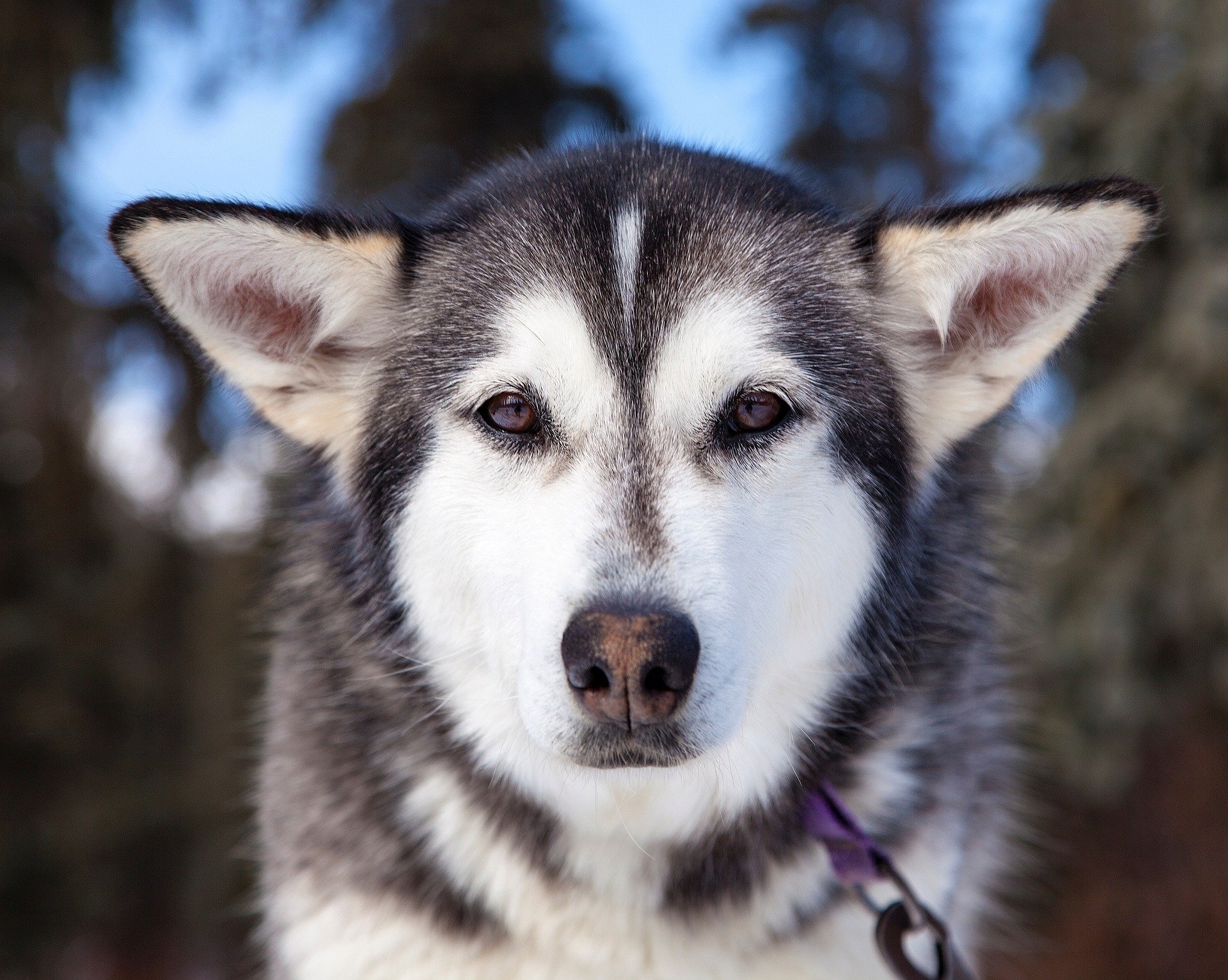
What Is Dog Sledding?
Dog sledding is the act of a sled being pulled by at least one, but normally multiple, sled dogs used to travel over ice and snow. There are multiple types of sleds that are used and it depends on the function needed.
Dog sledding has been used as a necessary form of transportation in places like Alaska, Canada, Greenland, Scandinavia, and more for a very long time before the modern readily-available snowmobiles and the like. However, dog sledding is also considered a sport and there are many sled dog races around the country and the world. Dog sledding is also now a popular wintertime tourism activity that travelers seek out.
History Of Sled Dogs And Dog Sledding
To those of us that grew up in warmer climates, it may seem otherworldly but dogs have been used to pull sleds for a long time to travel and hunt in northern areas where there is too much ice and snow to travel any other way. The history of sled dogs goes back as far as the 10th century. Dog sledding was invented by the native and Inuit people in the northern parts of Canada, or what is now considered Canada. Per usual, it didn’t take long for colonists to jump on this and start using sled dogs as well for expeditions, transportation, and hunting.
While there are one-dog sleds, most of the time it involves a team of sled dogs, and “mushers” put together a dog sled team much like coaches put together a football team.
There are lead dogs, point dogs, swing dogs, and wheel dogs. The pride and joy is the lead dog and mushers usually take much better care of these dogs as they’re much harder to replace. Their role is pretty self-explanatory – they are at the front of the pack and take the lead.
Wheel dogs’ “job” is to pull the sled out from the snow – so they’re the powerhouses.
Point dogs are behind the lead dogs and then swing dogs before the wheel dogs.
Over the history of sled dogs, one can easily describe what they look like as they are primarily always Siberian Huskies or Alaskan Malamutes. Both exhibit incredible strength, speed, and endurance, and they have the perfect double coats for the cold.
Over time, the two have been bred together to create Alaskan Huskies which are also popular sled dogs due to their endurance, speed, and dedication to running even when tired.
Occasionally, short-haired hounds are used for dog sledding as they are faster. They are considered harder to train to pull a sled because it is not in their nature.
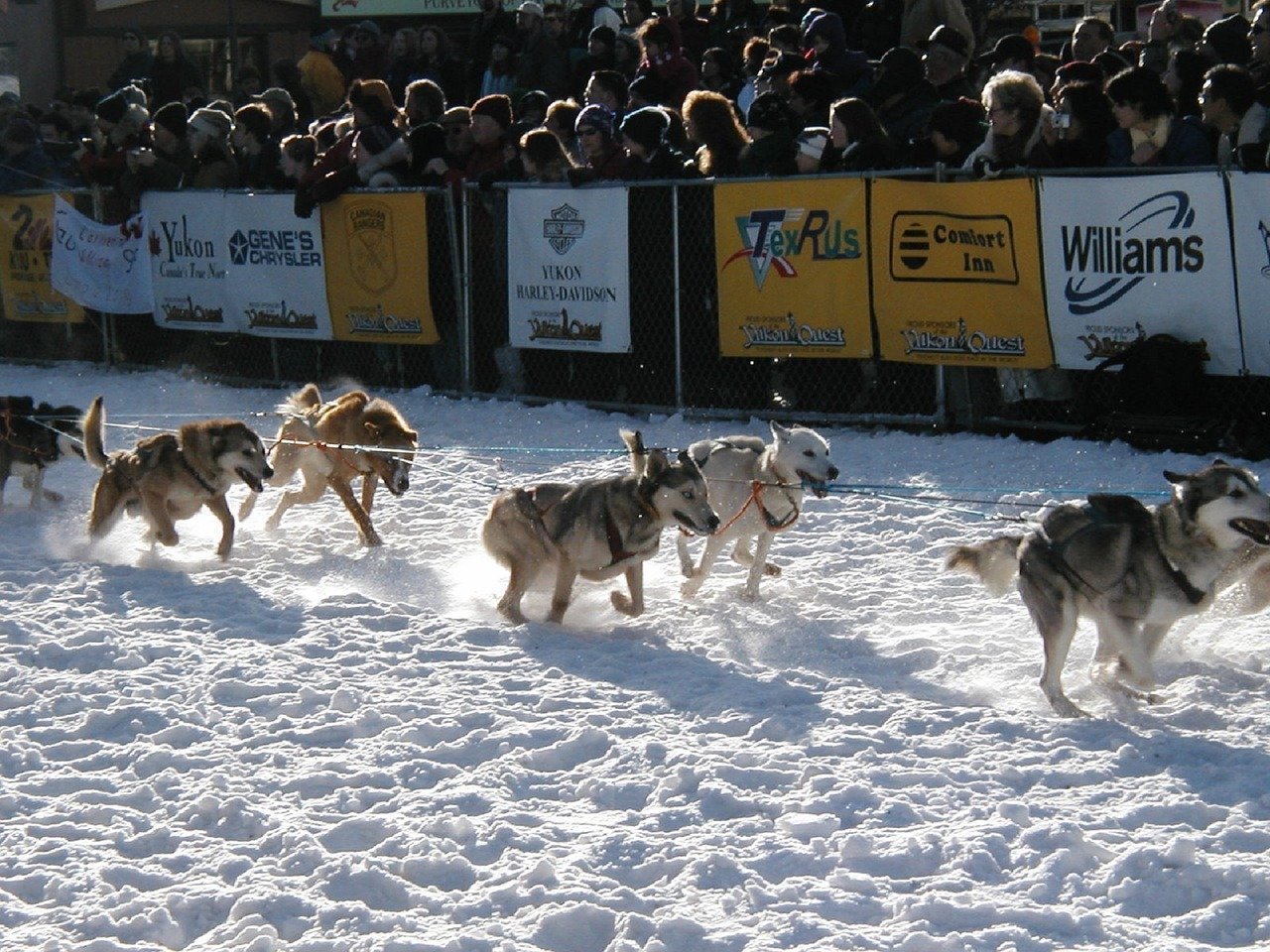
History Of Dog Sled Racing
Believe it or not, dog sled racing has also been around for quite a while and has likely been a casual sport for some time. However, the first formal race was in 1850.
In 1908, the first dog sled race took place in Nome, Alaska, and became famous about fifteen years later when a Norwegian living in Alaska, Leonhard Seppala, delivered diphtheria medicine to a town that was dying including many children.
The journey became well-known leading to a statue of the lead dog Balto in New York City. However, as told in the new Disney movie, it was actually Togo that was the hero dog in that journey. Balto only got credit because he was the lead dog on the last of several teams that actually delivered the medicine.
The Iditarod
Arguably the most famous dog sled race in the US is the Iditarod. The famous race started in 1967 when mushers wanted to create interest in dog sledding in the face of modern alternatives like snowmobiles.
After the first few years, they planned a new route – longer, more intense – going all the way from Anchorage to Nome. This was a three-week journey in 1973 for the winner of the inaugural year.
Dogs exploited for the Iditarod are routinely given antacids to prevent gastric ulcers. A veterinarian who studied sled dogs from the Iditarod found that 50-70% of the dogs may be affected by exercise-induced stomach disease. While the dogs may seem perfectly fine, dogs with ulcers don’t typically show symptoms until the condition is already life or death.
Other Races
→ Inspired by the “success” of the Iditarod, Norwegian mushers created the longest dog race in Europe – the Finnmarkslopet. In current times, there are two different classes of the race – one being 310 miles and one being 620 miles.
→ The Yukon Quest
→ List of all sprint, mid-distance, and long-distance races.
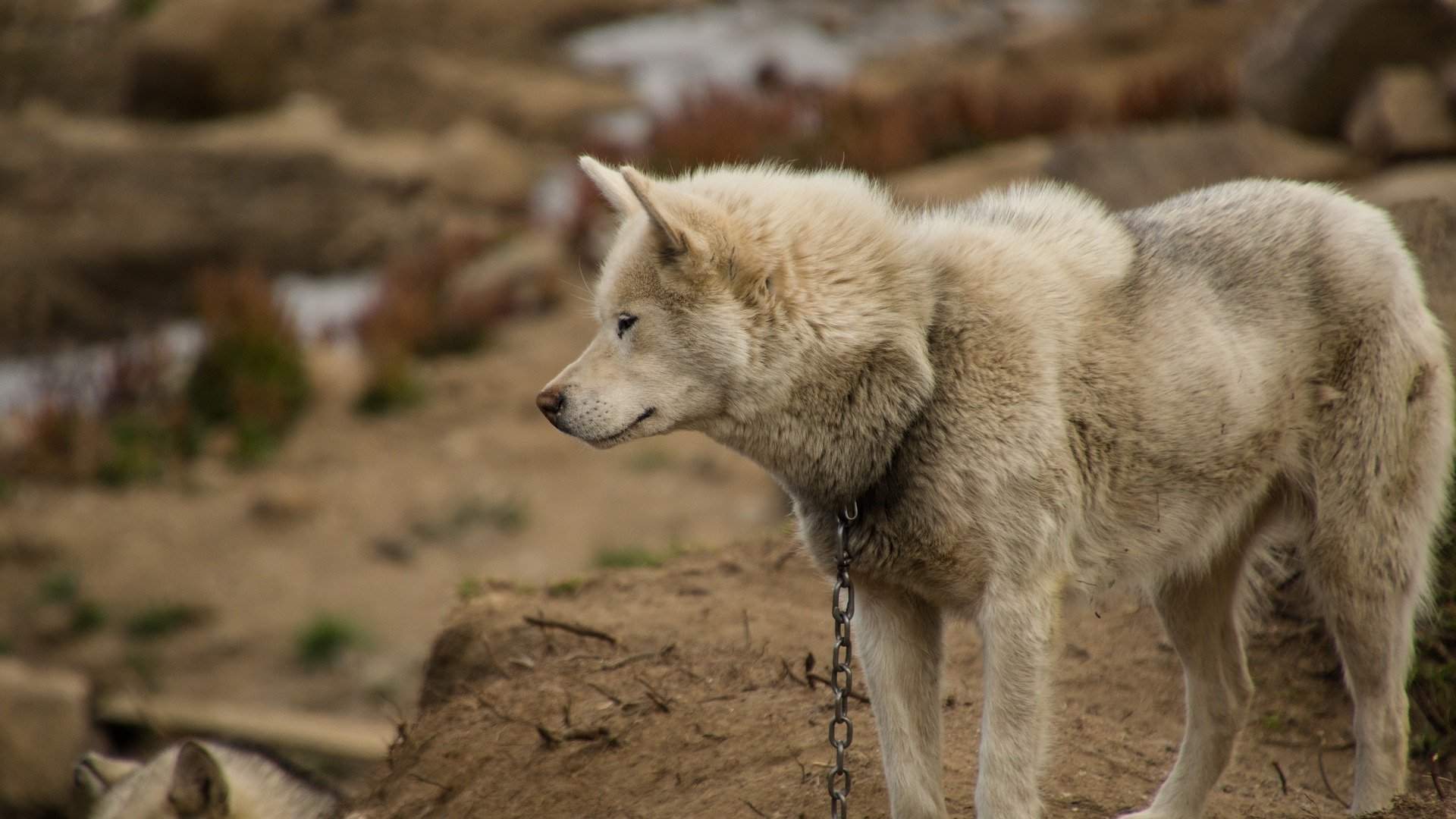
Is Dog Sledding Ethical?
I think it’s safe to assume I do not think dog sledding is ethical. But, I don’t just want to say that and you blindly believe me. I want you to know the facts about dog sledding for yourself and come to your own decision – I’m just hoping it’ll be the same decision I came to on the question of is dog sledding ethical.
From the number of Iditarod dog deaths, the dog deaths that are not as publicized because the races aren’t as publicized as the Iditarod, the deaths and culling that happens before and after the races but don’t get counted in the race death tally, the undercover videos, and tapes, the comments of previously involved, the number of allegations and evidence from dog sledding establishments all over, and disturbing and barbaric direct quotes from mushers and handlers, there are plenty of reasons to determine that dog sledding and dog racing is not ethical.
Iditarod Dog Deaths
The Iditarod has a long history of Iditarod dog deaths and is the most famous race so I wanted to have a specific section focusing on the Iditarod dog deaths.
→ Dog death records have not always been kept up well, but at least 27 dogs used in the Iditarod have died since 2004 and at least 154 total. These records only take into account deaths during the actual race.
→ In 2017, the most dogs (six) died since 2009. One dog was determined to have died from acute aspiration pneumonia which happens by inhaling foreign substances such as food, liquid, and very often – vomit. Another of the six dogs died of an “extensive pulmonary edema” caused by too much fluid in the lungs.
→ Also in 2017, a doping scandal occurred in which four dogs on Dallas Seavey’s team tested positive for high levels of Tramadol – an opioid pain reliever. It was later determined that he was not the one to dope the dogs. Whether done by his own team or was sabotaged, this is another prime example that the dogs are seen as a commodity – ones to dope to get them through a race for money or ones to use to sabotage your competitor.
→ In the official Iditarod rules, there is even a list of the types of dog deaths that are accepted as “unpreventable.”
In 2018, the rules stated that “all dog deaths are regrettable, but there are some that may be considered unpreventable.”
This was changed in 2019 to read “any dog death that occurs during the race results in immediate scratch or withdrawal, except only unless the death was caused solely by unforeseeable, external forces.”
But, what are “unforeseeable, external forces?” I’m pretty sure they’re not death by old age. Nope – they include situations such as getting kicked by a moose or being hit by a snow machine.
→ In 2019, on a lighter note, a musher dropped out of the race after mile 14 when he yelled at one of the dogs and the entire team of dogs formed their own form of protest and refused to go on.
Money & Fame – What It’s All About
What is the draw about the Iditarod and other dog races? Money, of course.
Jon Saraceno of USA Today dubbed the race “Ihurtadog.”
Of course, Alaska reaps the benefits of increased tourism. Best as I can determine, the 49th state is dead-last in decency when it comes to animal welfare.
Not fast enough, but slowly the money is dwindling. In 2017, State Farm, Guggenheim Partners, and Wells Fargo ended their sponsorship after the race. Organizers announced numerous budget cuts including cutting the purse for 2018 by $250k.
The purse is still $500,000 in 2020, however, and we still have a long way to go before the race(s) end.
Other Tragic Occurrences
→ Recently in 2019, Yukon Quest’s two-time winner was banned from competing after a necropsy on his dog revealed just how sick the dog was when he tragically died during the race. Boppy was shown to have died of aspiration caused by inhaling vomited stomach contents. If that’s not bad enough, there was also evidence of stomach ulcers, intestinal inflammation, whipworm infestation, skeletal muscle necrosis, and severe weight loss and muscle wasting. Boppy was only five years old.
→ Dogs who are culled and not killed, are often taken to shelters that tend to become overrun with unwanted dogs when racing season is over. One Fairbanks shelter calls this “the spring husky dump.”
→ In the 2018-2019 season, an undercover eyewitness working Alaska’s dog sledding industry with two different Iditarod regulars including champions found dogs denied veterinary care, kept constantly chained with inadequate shelter, and exhausted and dehydrated dogs. See the video below.
Studies on the Effects of Dog Racing
→ Short of dying, sled dogs suffer on the trail. They fall victim to diarrhea, bleeding ulcers, lung damage, ruptured discs, viral diseases, broken bones, torn muscles, and frostbite.
→ A study in 2002 determined that
“…canine winter athletes also suffer from increased prevalence of lung disease secondary to hyperpnea with cold air… in elite racing sled dogs 24 to 48 hours after completion of a 1,100-mile endurance race…Eighty-one percent of the dogs (48 of 59) examined had abnormal accumulations of intraluminal debris, with 46% (27 of 59) classified as moderate or severe…Bronchoalveolar lavage obtained from dogs after the race had significantly higher nucleated macrophage and eosinophil counts compared with sedentary control dogs. Our findings support the hypothesis that strenuous exercise in cold environments can lead to lower airway disease.”
→ If the accounted for 100+ Iditarod dog deaths don’t make you sick enough, think about this:
“With a buildup of lactic acid and other chemicals from muscle degradation as a result of extreme exercise,” said Dr. Paula Kislak, President of the Association of Veterinarians for Animal Rights, “toxicity in the liver and kidneys may not cause death for days or weeks after a race.”
“Adding the dogs who were culled, died in training and died after the race from complications,” Dr. Kislak said, “the number is in the thousands. That is obscene. The race only is run for entertainment and to make money.”
→ The dog deaths that are actually counted are only counted in direct relation to the race – not the time leading up to or the time after the race. The bigger picture is much more gruesome than the already public picture.
Dog Sledding Tourism
→ In 2018, a disturbing video went viral that showed sled dogs chained and tethered, surrounded by their own waste, and at least one dog visibly injured at the Windrift dog kennels in Ontario.
→ In Whistler, a dog sledding business was caught putting down 56 of their dogs after the Winter Olympics when bookings started to decline and they couldn’t or didn’t want to feed them all.
→ In Aspen, the Krabloonik dog-sledding operation has been both a tourism fixture and also at the forefront of many allegations. The owner at the time, Dan MacEachen, brutalized dogs and left them underfed and chained. In previous years, he was charged with breaking the bones in a dog’s face and causing blindness in the dog. In 2005, it was reported that he shot to death unwanted dogs and dumped their bodies in a pit of feces. By the way, this is legal. The veterinarian of the Krabloonik dogs, Dr. Scott Dolginow claimed their housing was not ideal and stated:
“It’s hard to take care of that many dogs,” Dolginow said. “I think conditions there could be better. It will take money to do that. I’m not sure the business supports it. Dan has his own way of doing things, and he hasn’t always embraced chances to make changes.”
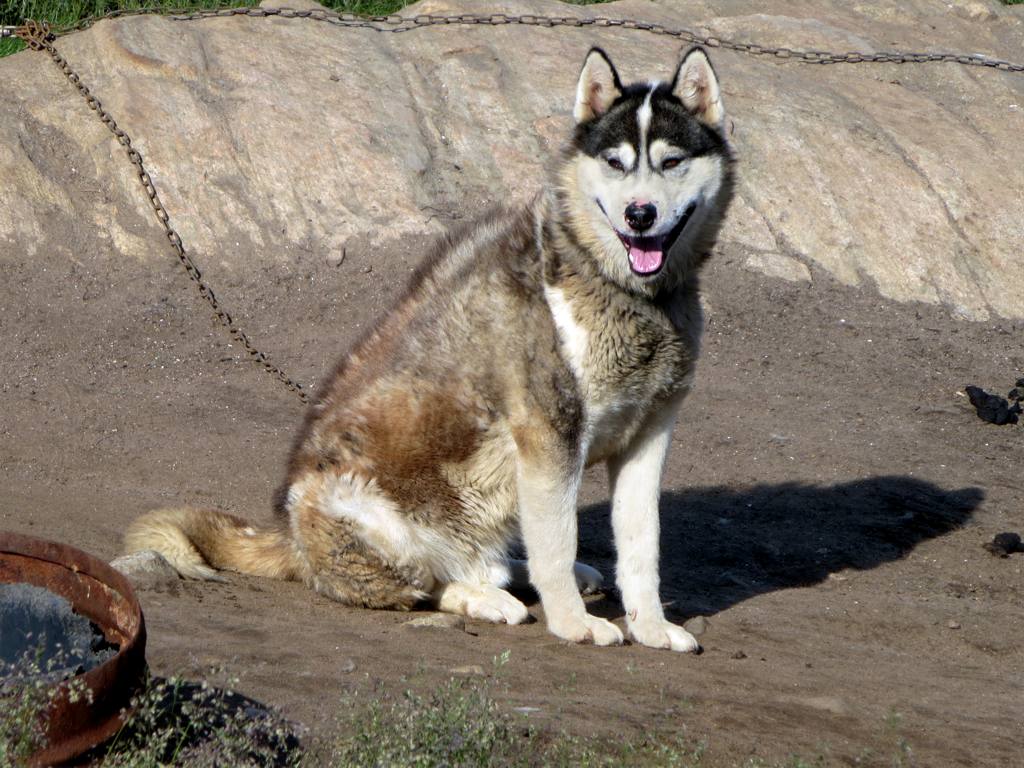
Former Mushers and Dog Handlers Speak Up
Who better to believe than people who were previously on the pro side of dog racing and dog sledding?
→ Previous dog musher, Sam Maxwell, now speaks out about the abuse and its effects on the dogs.
→ Iditarod dog handler, ‘River’ Mike Cranford is no longer with us, but his dying wish was for the dogs to be free and the race ended. After quitting as a dog handler, River was a regular at Iditarod protests and an avid dog advocate.
“[At one] kennel I worked at, the manager would walk through the dog yard with his pistol shooting dogs for fun. He thought it was great sport,” Cranford revealed.
“Culling unwanted dogs is an on-going mushers’ practice, and one racer had numerous pits full of dead dogs, from puppies to oldsters—some skinned for parka ruffs and mittens,” he continued. “On-going cruelty is the law of many dog lots. Dogs are clubbed with baseball bats, and if they don’t pull, [they’re] dragged to death in [the] harness. (Imagine being dragged by your neck-line at 15 miles per hour while suffering a major heart-attack!)”
→ Sue Eckersley, a former director of Whistler Sled Dog Co., after dissolving the company and getting all of the dogs adopted stated:
“I’m in a position where it’s very fair for me to say that this industry is an abomination. I question whether anyone can do commercial dog sledding ethically.”
Sue launched the company following the culling of 56 dogs in Whistler mentioned earlier in this post. Her intention was to be a positive model in the industry for the humane treatment of sled dogs. After only two years, she shut it down claiming it was impossible to run a dogsledding operation ethically.
“In trying to do it humanely, we were putting private money into the company to maintain the standards for the dogs that we felt somewhat comfortable with, but at the end of the day, we didn’t even feel like we were taking good enough care of these dogs,” she said.
→ Ashley Keith toured and trained at multiple competition kennels. She describes the environments she was exposed to but it was nothing compared to what the dogs went through.
She witnessed dogs fracturing their teeth as they chewed on their chains out of boredom and frustration, dogs getting tangled and almost suffocating, a completely healthy dog being euthanized simply so she would understand the importance of maintaining a sizable kennel and then the same dog being put in a freezer so his pelt could then be used to make garments.
After several years of touring many different facilities all over, she went to Alaska to work for the Seaveys where she found hundreds of dogs chained in deplorable conditions – rotting wood with no bedding
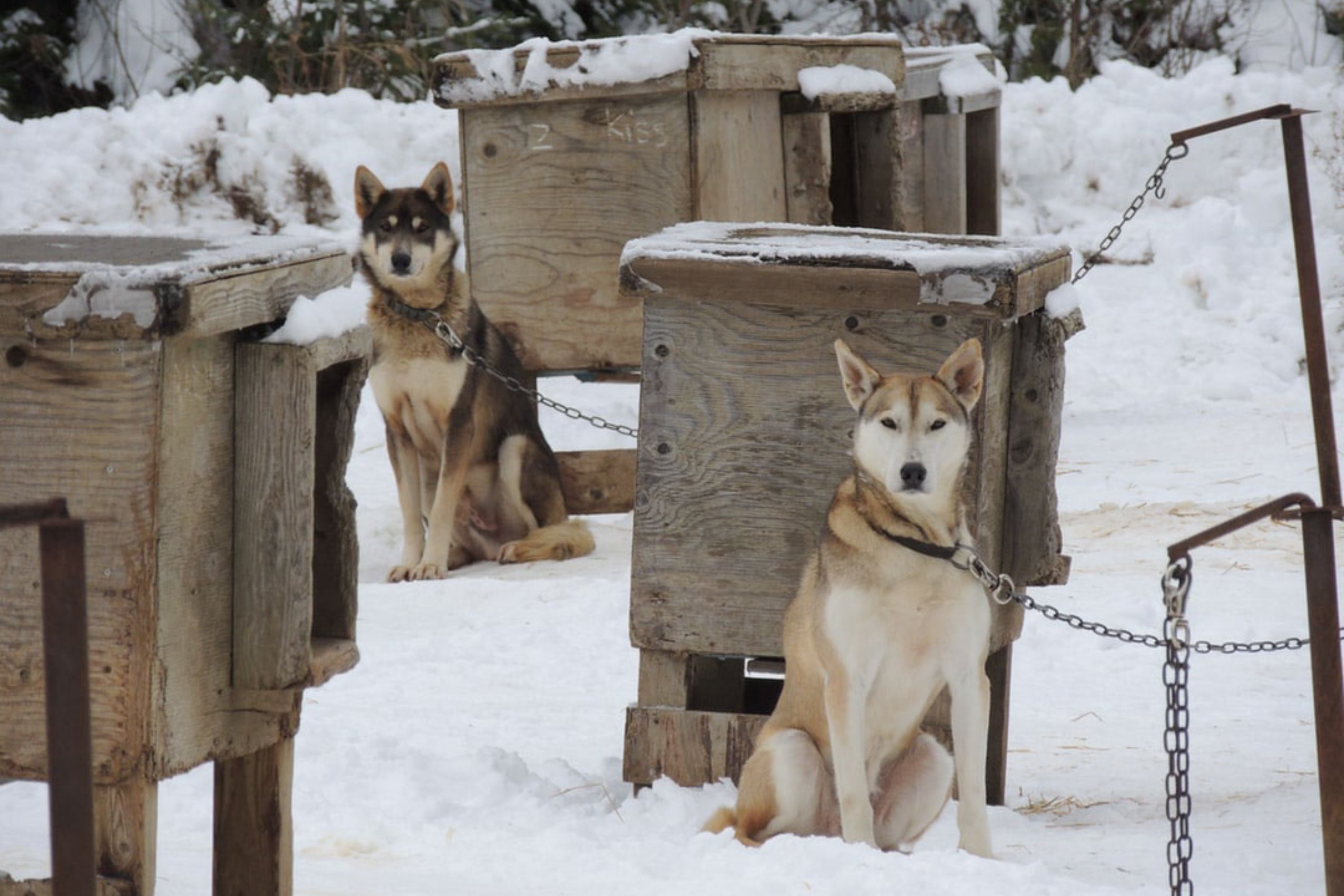
What You Can Do
If you’re still with me after all those facts about dog sledding and you’ve arrived at the decision that you don’t want to participate in dog sledding, but you want to do something to help:
- Don’t support or attend dog races.
- Don’t support or take part in dog sledding tourism.
- Take part in a ridiculous but fun human race. The Idiotorad in NYC – features hundreds of human racers who push shopping carts over the Brooklyn Bridge into Manhattan.
- Speak up and spread the word.
- Watch the documentary, Sled Dogs. This is the first documentary to look at sled dog operations and the Iditarod outside the public eye.
- Adopt a former sled dog.
- Support Sled Dog Action Coalition. Founded by Margery Glickman after a trip to Alaska in 1998 led to her visiting dog kennels and was horrified by their treatment.
- Support sled dogs in Whistler.
PLANNING A TRIP?
Find accommodation, read accommodation reviews, and check flight prices.
Book attractions, tickets, or guides in advance.
Research using these guides
See my packing list.
↓↓↓ PIN FOR LATER ↓↓↓
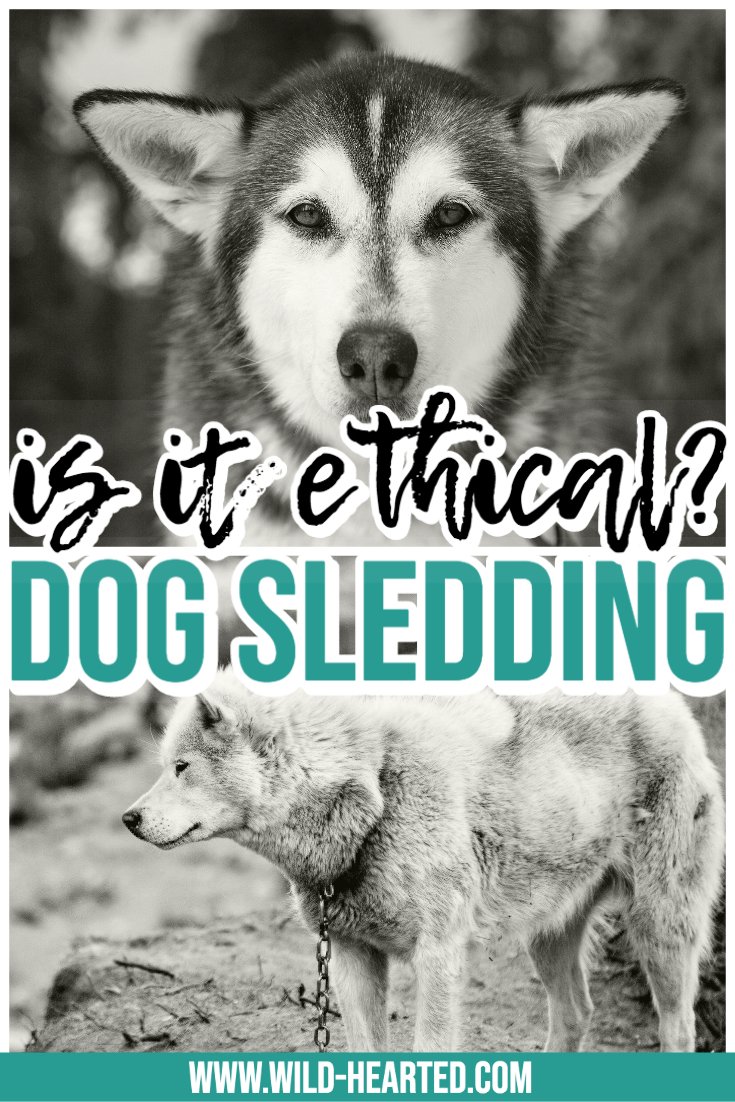
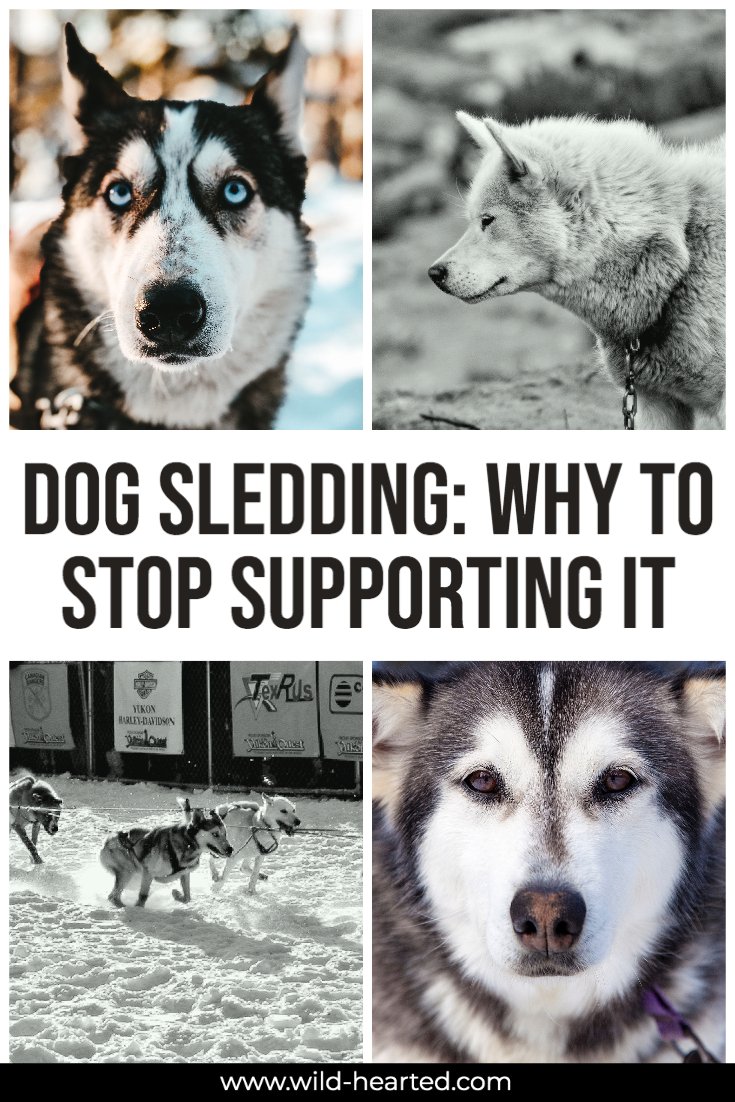
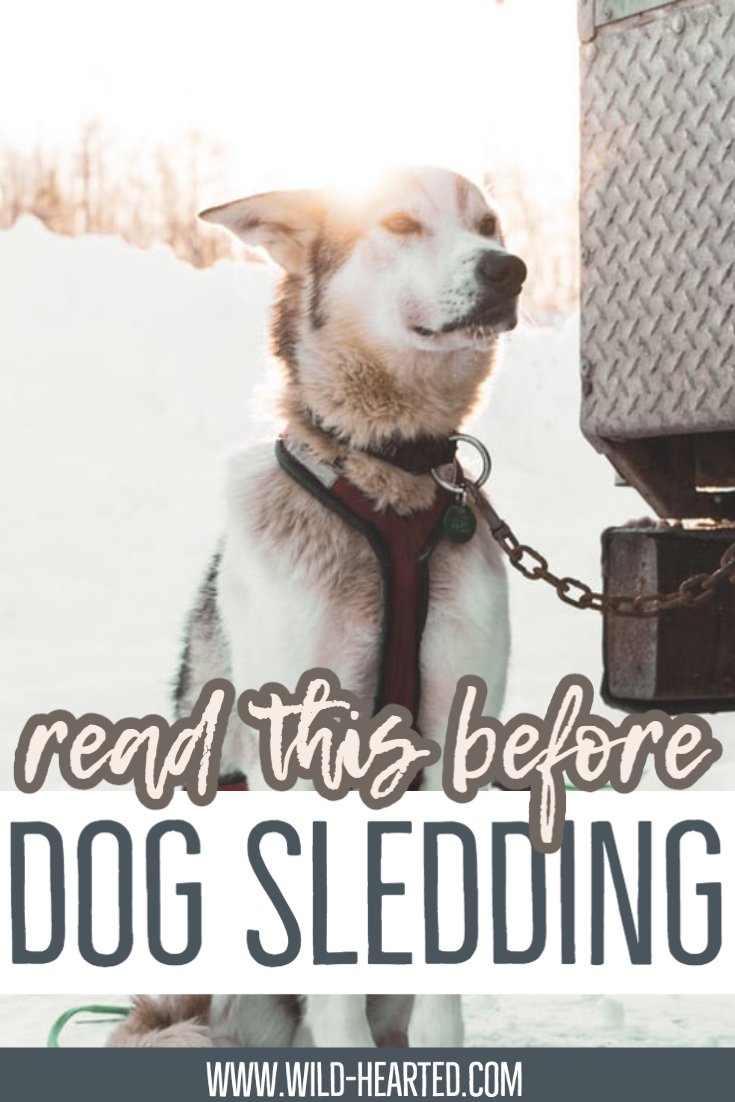
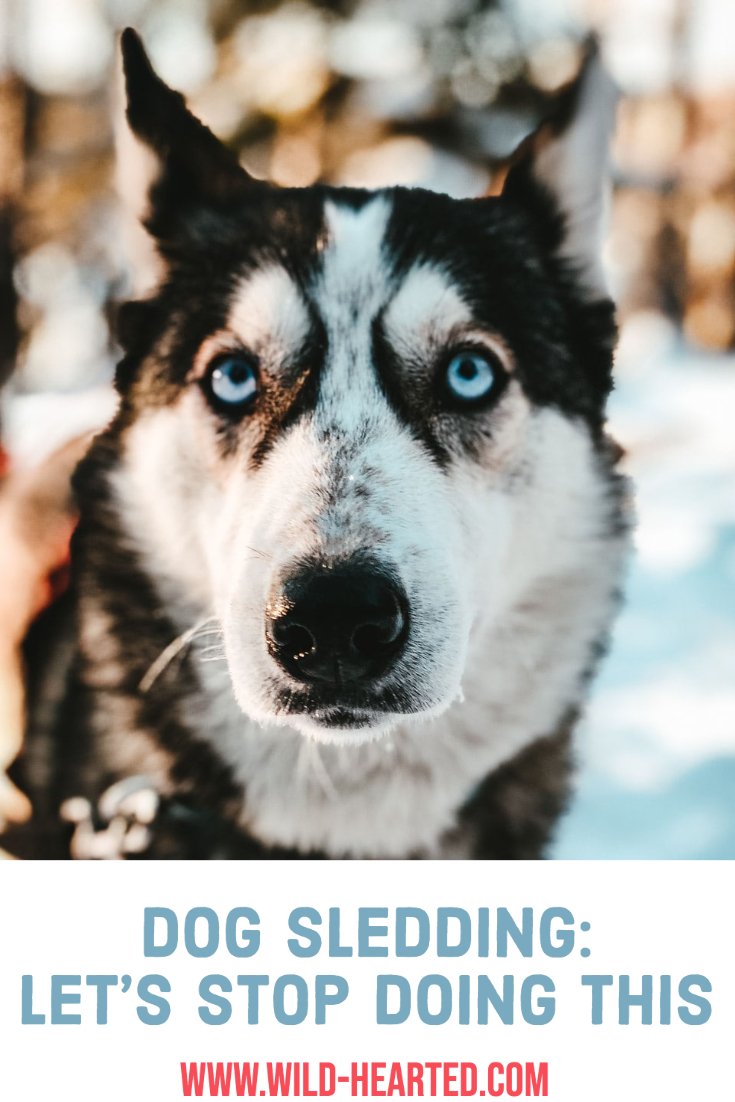
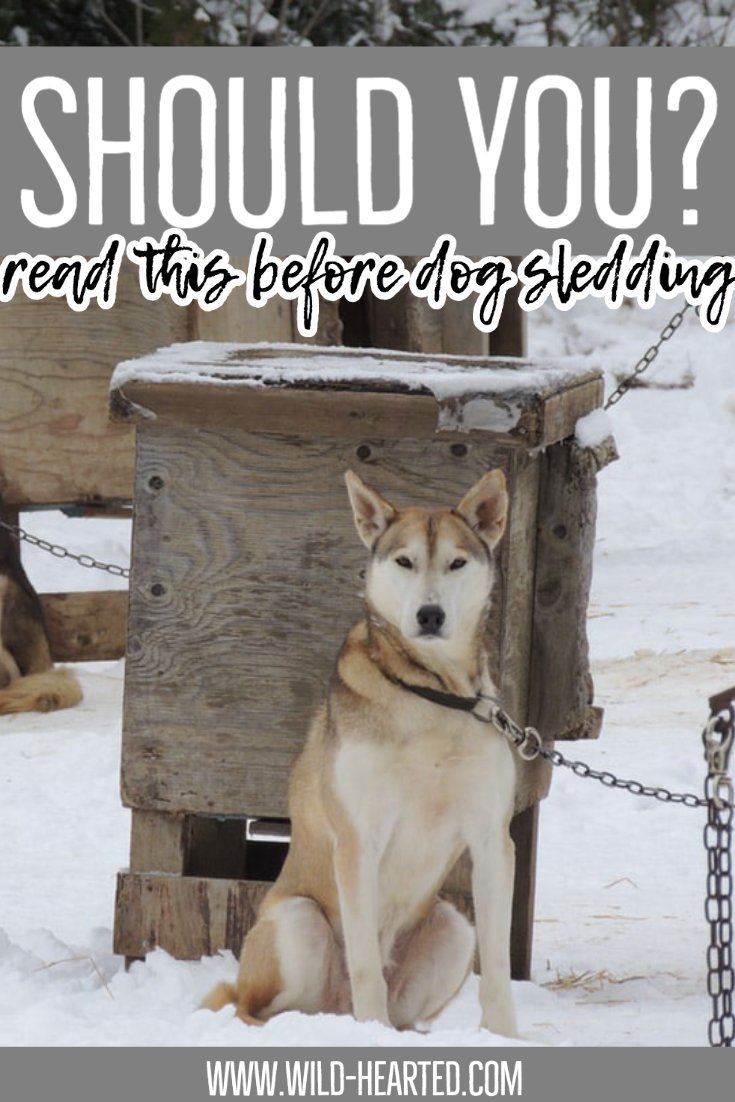
- 9 Weird Things To Do In Dublin, Ireland - April 13, 2024
- 14 Weird Things To Do In Indianapolis, Indiana - April 13, 2024
- Saudi Sands: Discovering Arabia’s Cultural Tapestry - April 1, 2024




